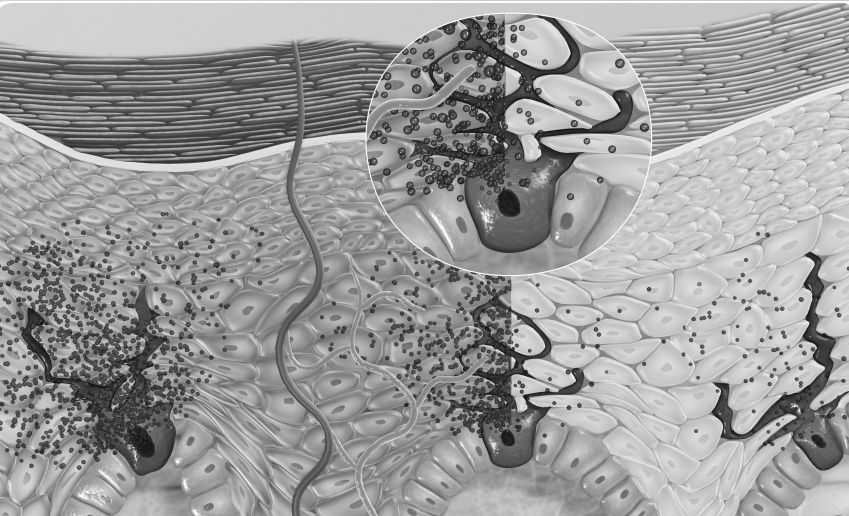It recent decades, people started understanding the harmful effect of Ultraviolet radiation, which is considered to be a major risk factor for the development of most skin cancers.
The sun is a major source of ultraviolet radiation. These rays have the ability to damageCross-sectional view showing skin tone becoming darker due to the production of more melanin to overcome DNA damage caused by UV radiation specific genes in skin cells. Tanning beds also emit ultraviolet rays. Excessive exposure to ultraviolet radiation increases the risk of skin disease.

Source: Wikipedia
There are three types of UV rays
- UVA rays, which cause skin aging and damage the DNA of its cells. As a result of their effects, wrinkles are formed and some types of tumor skin growths develop.
- UVB rays – directly damage the DNA of skin cells. These are the rays that cause the skin to burn when exposed to the sun. They are associated with most types of skin cancer.
- UVC rays do not penetrate the atmosphere, therefore are not damaging human skin.
The harmful effects of UV rays on the skin
Excessive exposure to sunlight predisposes to the development of cancer, but this is not the only harmful effect of rays we should be concerned about.

In the short term, ultraviolet rays cause redness, burning of the skin and darkening of the overall complexion (also known as dark or pigment spots). Redness, burning and pigment spots are signs of damage to the skin.
In the long run, sunlight leads to rapid aging of the skin, loss of elasticity, dark spots (a clear sign of skin aging), fine lines and wrinkles.
The target of skin exfoliation procedures is to reduce the appearance of these blemishes, making the skin smoother, fresher and more radiant.
Skin imperfections can be successfully made less visible after removing the top layer of dead skin cells to reveal the soft and healthier skin beneath.
Additionally, the exfoliating process promotes the production of collagen and elastin – the proteins in charge of skin versatility, tone, and surface.
Collagen makes up almost 80% of the skin and is found in the middle layer called the dermis. It works in conjunction with another protein, elastin, to give skin tightness and firmness and to give it elasticity when stretched.
By exfoliating, we actually stimulate the collagen synthesis by creating a mild trauma to the skin. The natural body response is to boost collagen production, due to the trauma experienced. Fibroblasts are then activated.
Fibroblasts are special skin cells located in the dermis. Fibroblasts also produce other skin structural proteins such as elastin (a protein that helps restore the structure and shape) and glycosaminoglycan (GAG). GAGs is the main substance that hydrates the dermis. In order to transmit the signal or initiate the development of structural proteins in the skin, fibroblast cells have receptors with a special shape.
When receptors bind with the right combination of signaling molecules (called fibroblast growth factors), fibroblasts start producing collagen.
In order to maintain a healthy and youthful appearance, it is best to protect the healthy collagen you have and prevent its future degradation. There are two ways to do this: (1) avoid UVA and UVB rays, and (2) prevent the harmful effects of free radicals.
Regularly and properly exfoliating the skin means that you’ll be able to partly cover the damage, caused by UV radiation. The additional benefits you’ll get include:
- Unclogged pores, which will result in fewer acne breakouts – the deep skin exfoliation eliminates all contaminants, dead skin cells, makeup residue and sebum accumulated over time. After performing exfoliation, your pores will be unclogged and able to perform optimally. This will reduce the appearance of pus-filled pimples, blackheads and whiteheads
- Increased blood circulation and lymphatic drainage – the increased blood flow means that your skin cells get the oxygen and important nutrients they need to perform the best they can. The lymphatic drainage encourages the movement of lymph fluids in the skin cells. This fluid in the lymphatic system helps remove waste and toxins from the skin tissue
- More benefits from the skincare products you are using – when the proper functioning of the skin is restored, skin cells can absorb more beneficial substances, available in the products applied





Add comment